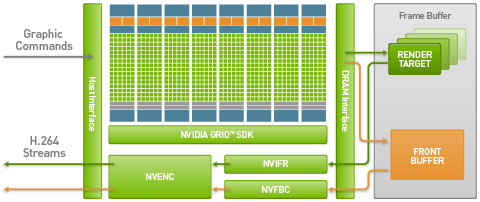Amazon’s new graphical cloud helps make desktops obsolete
 Amazon Web Services quietly released on Tuesday a pair of new instances on its EC2 cloud computing service. Not just new instances but a whole new type of instance aimed at 2D and 3D graphical computing. For the first time from AWS in a generally available instance, developers and users will have access to virtual machines with GPUs.
Amazon Web Services quietly released on Tuesday a pair of new instances on its EC2 cloud computing service. Not just new instances but a whole new type of instance aimed at 2D and 3D graphical computing. For the first time from AWS in a generally available instance, developers and users will have access to virtual machines with GPUs.
It’s like putting a PC in the cloud. More properly it is like putting your PC in the cloud. I think this has great disruptive potential. And that means we’ll see similar services coming soon from other cloud providers.
Autodesk must think it has potential, too, because it’ll be offering several applications on the new platform, though notably not AutoCAD, at least not at first.
Starting at $0.65 per hour you’ll be able to run in the Amazon cloud DirectX, OpenGL, CUDA, and OpenCL applications and services. The base g2.2xlarge instance comes with 15 gigs of memory, 60 gigs of local storage, an Intel Sandy Bridge processor running at 2.6 GHz (26 compute units) and a single NVIDIA Kepler GK104 graphics card with 1536 CUDA cores.
Sounds powerful, so I asked Max Levchin whether this is important and he very diplomatically said, "GPUs have long ceased to be used only (or even primarily) for graphical processing. Because of their massively parallel architecture (you can generally do basic processing on two, or two million, pixels perfectly concurrently) they are an amazing tool in solving very CPU-intensive problems. General Purpose GPUs have been gaining real traction in the last few years in all kinds of applications".
It’s pretty obvious to me that this graphical cloud will be useful for things like encoding and transcoding video and audio, especially for those who don’t need to do it very often, but the bigger question is whether it’s enough to kill most desktop computing? I suspect it is, though maybe not in exactly the way people expect.
Lots of experts over the years have told me there will always be desktop computing, but when you explore further it becomes clear they mean there will always be desktop computing, but not necessarily desktop computers.
Desktop computing means a large display, keyboard and mouse. It used to also mean local processing and storage because networks were so slow, but that part is changing right here and now.
Most of the time I need no more processing power than is already in my mobile phone. In the office it would be nice to have that bigger display and keyboard, but as I have written before these are becoming wireless peripherals that will shortly be activated whenever I am nearby. The industry will love having a whole new class of products to sell us.
What has been keeping desktops viable is the lack of those wireless peripherals and the problem that for some activities a mobile phone processor just isn’t powerful enough. Enter Amazon’s new graphical cloud. Now your mobile, whether through the handset or through those wireless peripherals I’m predicting, will be able to access as much processing power as you are willing to pay for. And because it’s a shared resource that cost should be pretty low.
Why keep a desktop for 10 hours per year of Photoshop picture editing? Better to pay $1 per hour or so for workstation performance with the latest version of the software. If that sounds like a kick in the head to Adobe or Autodesk it’s also likely to broaden their markets attracting new users.
 A recurring argument for local computing is that cloud-based processing doesn’t work well on airplanes and that people just like to keep their own stuff. Well airplanes are getting more and more networked and how much time do you spend in flight anyway? Use that time for drinking, instead. And yes, many people like to keep their own data but more and more the eventual channel for sharing and deployment is online. Whether it’s by e-mail, Facebook or YouTube, our products are more and more destined for the cloud anyway.
A recurring argument for local computing is that cloud-based processing doesn’t work well on airplanes and that people just like to keep their own stuff. Well airplanes are getting more and more networked and how much time do you spend in flight anyway? Use that time for drinking, instead. And yes, many people like to keep their own data but more and more the eventual channel for sharing and deployment is online. Whether it’s by e-mail, Facebook or YouTube, our products are more and more destined for the cloud anyway.
This is all just a guess on my part, of course, but I think the elements are coming together fast to make your present desktop computer your last one.
Photo credit: LilKar/Shutterstock
